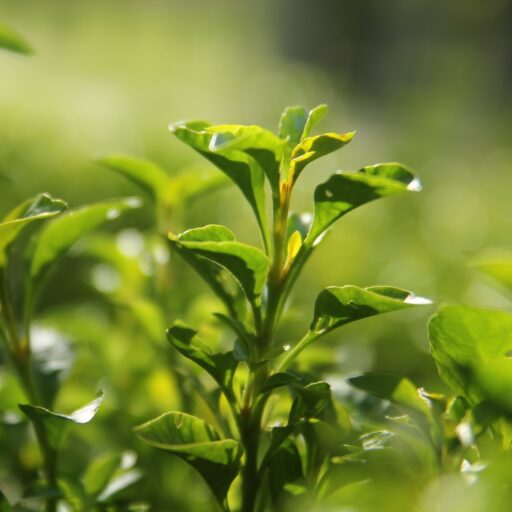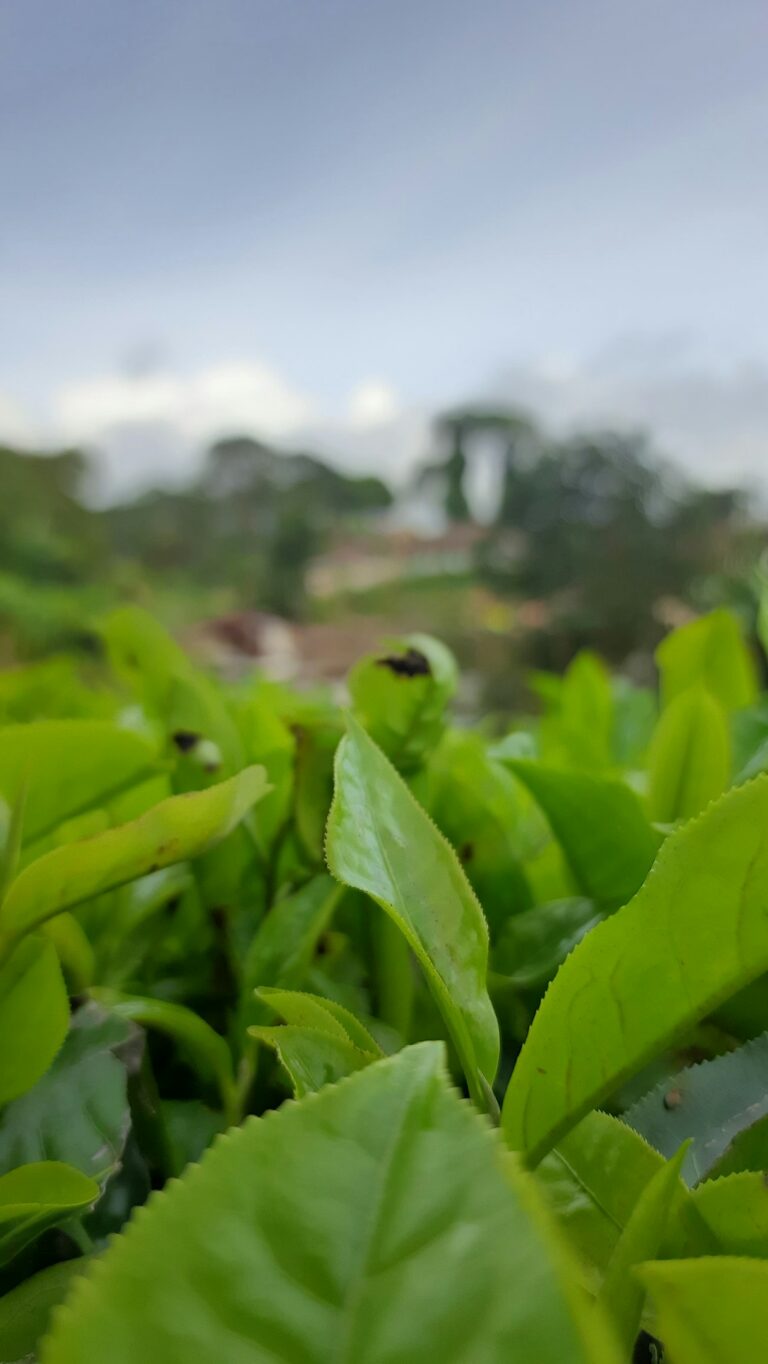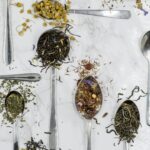Support our educational content for free when you purchase through links on our site. Learn more
Why is Tea Hard to Grow? 10 Surprising Challenges Unveiled! 🌱
Have you ever sipped a cup of tea and thought about the journey those delicate leaves took to reach your mug? 🍵 Growing tea isn’t just about planting seeds and watering them; it’s a complex process filled with challenges that can baffle even the most seasoned gardeners. From picky soil requirements to the relentless battle against pests and diseases, the hurdles are many. Did you know that it can take up to three years for a tea plant to produce its first harvest? That’s right! The journey from seed to sip is a labor of love that requires patience, knowledge, and a touch of luck.
In this article, we’ll explore 10 surprising challenges that make tea hard to grow and provide you with practical insights to help you navigate this intricate world of tea cultivation. Whether you’re an aspiring tea grower or simply curious about what goes into your favorite brew, you’ll find valuable tips and fascinating facts that will change the way you think about tea. So, grab your gardening gloves and let’s dive in!
Key Takeaways
- Tea is picky about its environment: It requires specific soil, climate, and altitude to thrive.
- Patience is essential: It can take up to three years for tea plants to mature and produce quality leaves.
- Pests and diseases are constant threats: Tea plants are susceptible to various pests and diseases that can hinder growth.
- Watering wisely is crucial: Consistent moisture without overwatering is key to healthy tea plants.
- Processing is an art: The journey from leaf to cup involves several intricate steps that affect flavor and quality.
Ready to embark on your tea-growing adventure? 👉 Shop our recommended tea growing kits to get started on your journey! 🌱 Explore Tea Growing Kits
Table of Contents
- Quick Tips and Facts About Growing Tea
- The Challenges of Cultivating Tea: What You Need to Know
- Soil and Climate: The Unsung Heroes of Tea Growth
- Pests and Diseases: The Hidden Enemies of Tea Plants
- Watering Wisely: The Art of Hydration for Tea Plants
- Harvesting Techniques: Timing is Everything!
- Processing Tea: Turning Leaves into Liquid Gold
- The Role of Genetics: Why Some Teas Thrive While Others Struggle
- Tea Varieties: Which Ones are the Hardest to Grow?
- Innovative Solutions: How Technology is Changing Tea Cultivation
- Tea in the News: Recent Research on Tea and Health
- Conclusion
- Recommended Links
- FAQ
- Reference Links
Ah, tea! That magical elixir that fuels our mornings and soothes our evenings. ☕ But have you ever stopped to wonder, “Why is tea so hard to grow?” 🤔 It seems like every other plant thrives with a little sunshine and water, right? Well, tea, my friend, is a different story.
How hard is tea to grow? It’s a question we get asked a lot at Growing Teas™. And the answer, like a good cup of green tea , is nuanced and complex. So buckle up, tea lovers, as we delve into the fascinating world of tea cultivation and uncover the secrets behind its challenging nature!
Quick Tips and Facts About Growing Tea #quick-tips-and-facts-about-growing-tea
Before we dive into the nitty-gritty, let’s start with some quick-fire facts:
- Tea is picky: 🌿 This diva of the plant world demands specific soil, climate, and even altitude to thrive.
- Patience is key: ⏳ Forget instant gratification! Growing tea from seed to cup is a labor of love that takes years.
- Pests and diseases? Oh yes! 🐛 Tea plants are like magnets for pesky critters and fungal infections.
- Not all climates are created equal: 🌎 Unless you live in a tropical or subtropical region, growing tea outdoors can be a challenge.
Intrigued? You should be! Now, let’s explore these challenges in detail.
The Challenges of Cultivating Tea: What You Need to Know #the-challenges-of-cultivating-tea-what-you-need-to-know
Growing tea isn’t as simple as throwing some seeds in the ground and hoping for the best. It’s a delicate dance between nature and nurture, and even experienced growers face their fair share of hurdles.
1. Terroir: The Tastemaker ⛰️☀️🌧️
“Terroir” is a fancy French word that encompasses all the environmental factors that influence a crop’s flavor. For tea, this includes:
- Soil: Tea prefers slightly acidic soil (pH 4.5-5.5) with good drainage.
- Climate: Think warm and humid, with plenty of rainfall (at least 50 inches per year).
- Altitude: High-altitude teas are prized for their delicate flavors, but growing at higher elevations presents its own set of challenges.
As the folks at Shang Tea put it, “The bottom line is that we do not have the identical elevation, air quality, moisture level, soil, and climate that Fuding County in Fujian Province has, meaning that we would not be able to produce the same level of quality tea anywhere else but there.”
2. Pests and Diseases: The Uninvited Guests 🐛🦠
Tea plants are like all-you-can-eat buffets for a whole host of pests and diseases, including:
- Tea Mosquito Bug: These tiny terrors suck the sap from young leaves, causing stunted growth and deformed buds.
- Blister Blight: This fungal disease causes lesions on leaves, reducing yield and quality.
- Root Rot: Poor drainage and excessive watering can lead to root rot, a death sentence for tea plants.
3. Labor of Love: The Time Commitment ⏳
From seed to your cup, tea production is a lengthy process that requires patience and dedication. Here’s a glimpse:
- Germination: Tea seeds can take anywhere from a few weeks to several months to germinate.
- Maturity: It takes at least 3 years for a tea plant to mature and produce high-quality leaves.
- Harvesting: Tea leaves are typically harvested by hand, a labor-intensive process that requires skill and precision.
4. Climate Change: The Unpredictable Factor 🌡️🌎
As if growing tea wasn’t challenging enough, climate change is throwing a wrench into the works. Rising temperatures, erratic rainfall patterns, and extreme weather events are all impacting tea production worldwide.
Soil and Climate: The Unsung Heroes of Tea Growth #soil-and-climate-the-unsung-heroes-of-tea-growth
We’ve already touched upon the importance of terroir, but let’s delve deeper into the specific soil and climate requirements that make tea such a finicky crop.
Soil: The Foundation of Flavor 🌱
Tea plants thrive in well-drained, slightly acidic soil with a pH between 4.5 and 5.5. The ideal soil composition is a mix of:
- Loam: Provides good drainage and aeration.
- Sand: Improves drainage.
- Clay: Retains moisture and nutrients.
Climate: The Mood Setter ☀️🌧️
Tea prefers a warm, humid climate with plenty of rainfall. The ideal temperature range is between 60-85°F (15-30°C). High humidity is also crucial, as it helps prevent the leaves from drying out and encourages the development of those complex flavors we all know and love.
Altitude: The Flavor Enhancer ⛰️
Did you know that tea grown at higher elevations often has a more delicate, nuanced flavor? That’s because the cooler temperatures and thinner air at higher altitudes slow down the growth cycle, allowing the leaves to develop more complex sugars and aromas.
Pests and Diseases: The Hidden Enemies of Tea Plants #pests-and-diseases-the-hidden-enemies-of-tea-plants
Tea plants may look delicate, but they’re surprisingly resilient. However, they’re not invincible. A whole host of pests and diseases can wreak havoc on tea plantations, from tiny insects to microscopic fungi.
Common Tea Pests: A Rogue’s Gallery 🐛
- Tea Mosquito Bug: These small, sap-sucking insects can cause significant damage to young tea leaves, leading to stunted growth and deformed buds.
- Mites: Spider mites and other mite species can also infest tea plants, causing leaf discoloration, webbing, and reduced vigor.
- Caterpillars: Various caterpillar species feed on tea leaves, causing defoliation and reducing yield.
Tea Diseases: A Silent Threat 🦠
- Blister Blight: This fungal disease causes lesions on tea leaves, reducing both the quality and quantity of the harvest.
- Grey Mold: Another fungal disease, grey mold can affect various parts of the tea plant, causing leaf spots, stem cankers, and flower blight.
- Root Rot: Poor drainage and overwatering can lead to root rot, a serious condition that can kill tea plants.
Integrated Pest Management: Fighting Back Naturally 🌿
At Growing Teas™, we believe in a holistic approach to pest and disease management. Integrated Pest Management (IPM) strategies focus on prevention and natural control methods, such as:
- Crop Rotation: Rotating tea crops with other plant species can help break pest and disease cycles.
- Beneficial Insects: Introducing beneficial insects, such as ladybugs and lacewings, can help control pest populations.
- Organic Pesticides: When necessary, organic pesticides derived from natural sources can be used to manage pests and diseases.
Watering Wisely: The Art of Hydration for Tea Plants #watering-wisely-the-art-of-hydration-for-tea-plants
Just like us, tea plants need water to survive. But too much or too little can be detrimental to their health. Here’s how to strike the right balance:
The Goldilocks Zone: Finding the Right Moisture Level 💧
Tea plants prefer consistently moist soil, but they don’t like to sit in water. Overwatering can lead to root rot, while underwatering can stunt growth and affect flavor.
Watering Tips for Healthy Tea Plants:
- Water deeply and infrequently: Instead of giving your tea plants a little water every day, water them deeply once or twice a week, allowing the water to penetrate the root zone.
- Check the soil moisture: Before watering, stick your finger into the soil. If it feels dry an inch or two below the surface, it’s time to water.
- Mulch around the base: Applying a layer of organic mulch, such as bark chips or compost, around the base of your tea plants can help retain moisture and suppress weeds.
Harvesting Techniques: Timing is Everything! #harvesting-techniques-timing-is-everything
Harvesting tea leaves is both an art and a science. The timing of the harvest, as well as the selection of leaves, can significantly impact the flavor and quality of the final product.
When to Harvest: The Prime Time ✂️
The best time to harvest tea leaves is during the growing season, which typically runs from spring to fall. The exact timing, however, depends on the type of tea and the desired flavor profile.
- First Flush: The first flush, or the first harvest of the season, is prized for its delicate flavor and aroma.
- Second Flush: The second flush, which occurs a few weeks after the first, produces leaves with a bolder flavor and higher caffeine content.
- Autumnal Flush: The autumnal flush, or the last harvest of the season, yields leaves with a unique, mellow flavor.
How to Harvest: Plucking with Precision 👌
Tea leaves are typically harvested by hand, a labor-intensive process that requires a keen eye and a delicate touch. The goal is to pluck only the newest, most tender leaves, which are located at the tip of each stem.
Processing the Harvest: From Leaf to Cup 🍵
Once the tea leaves have been harvested, they undergo a series of processing steps, including withering, rolling, oxidation, and drying. These steps help to develop the unique flavor, aroma, and appearance of different types of tea.
Processing Tea: Turning Leaves into Liquid Gold #processing-tea-turning-leaves-into-liquid-gold
Harvesting the leaves is just the beginning of the tea-making journey. The real magic happens during processing, where those humble leaves are transformed into the diverse array of teas we know and love.
1. Withering: Letting Go 🍃
Freshly plucked tea leaves are spread out in large trays or bamboo mats and allowed to wither for several hours. This process reduces the moisture content and makes the leaves more pliable for the next stage.
2. Rolling: Shaping the Future 🌀
Next, the withered leaves are rolled, either by hand or machine. This process breaks down the leaf cells and releases enzymes that initiate oxidation. The amount of rolling influences the final shape and size of the tea leaves.
3. Oxidation: The Flavor Alchemist 🧪
Oxidation is a crucial step that determines the color, flavor, and aroma of the tea. During oxidation, enzymes in the tea leaves react with oxygen, causing them to darken and develop their characteristic flavors.
- Black Tea: Fully oxidized, resulting in a dark brown color and robust flavor.
- Oolong Tea: Partially oxidized, offering a wide range of flavor profiles from floral to toasty.
- Green Tea: Minimally oxidized, preserving the natural green color and grassy flavor.
- White Tea: Unwithered and unoxidized, resulting in the most delicate flavor and the lightest color.
4. Drying: Preserving the Goodness 🔥
Finally, the tea leaves are dried to halt oxidation and preserve their flavor. This is typically done by heating the leaves gently until they reach the desired moisture content.
The Role of Genetics: Why Some Teas Thrive While Others Struggle #the-role-of-genetics-why-some-teas-thrive-while-others-struggle
Just like humans, tea plants come in different shapes, sizes, and personalities. Some are naturally more resilient, while others are more susceptible to pests, diseases, and environmental stresses.
Cultivars: The Tea Family Tree 🌳
Over centuries, tea growers have selectively bred tea plants to develop cultivars with specific characteristics, such as:
- Flavor: From floral and fruity to nutty and malty, the flavor possibilities are endless.
- Aroma: The aroma of tea can be just as intoxicating as its flavor, with notes of citrus, spice, and even chocolate.
- Appearance: Tea leaves come in a rainbow of colors, from emerald green to deep burgundy.
- Yield: Some cultivars are bred for high yield, while others are prized for their rare and delicate leaves.
Adaptability: The Survival of the Fittest 💪
The ability of a tea cultivar to adapt to its environment plays a crucial role in its success. Factors such as:
- Climate tolerance: Some cultivars are more tolerant of heat, cold, or drought than others.
- Pest and disease resistance: Certain cultivars have developed natural defenses against common tea pests and diseases.
- Soil adaptability: Some cultivars can thrive in a wider range of soil types than others.
Tea Varieties: Which Ones are the Hardest to Grow? #tea-varieties-which-ones-are-the-hardest-to-grow
While all tea comes from the same plant species, Camellia sinensis, the different varieties of tea we enjoy – black, green, white, oolong – each present unique challenges in cultivation.
White Tea: The Delicate Darling 👑
White tea, with its subtle flavor and minimal processing, is often considered the most delicate and difficult to grow. This is because:
- Specific Cultivars: White tea is typically made from specific cultivars of Camellia sinensis that are known for their young, silvery-white buds.
- Limited Growing Regions: These cultivars thrive in very specific microclimates, often found in high-altitude regions with cool, misty conditions.
- Susceptibility to Damage: The delicate buds are highly susceptible to damage from pests, diseases, and even rough handling.
Matcha: The Finely Ground Gem 🍵
Matcha, the vibrant green tea powder used in traditional Japanese tea ceremonies, presents its own set of challenges:
- Shade-Grown Requirements: Matcha is made from shade-grown tea leaves, which are shielded from direct sunlight for several weeks before harvest. This process increases chlorophyll content and creates a sweeter, more umami-rich flavor.
- Specialized Cultivation Techniques: Shade-growing requires specific techniques and structures to control light exposure and create the optimal growing environment.
- Labor-Intensive Processing: After harvest, matcha leaves are de-stemmed, de-veined, and ground into a fine powder using granite stone mills. This process is time-consuming and requires specialized equipment.
Other Challenging Teas:
- Yellow Tea: This rare tea undergoes a unique process called “smothering” or “enveloping,” which requires precise control of heat and humidity.
- Purple Tea: This relatively new variety of tea is characterized by its purple leaves, which are rich in anthocyanins. Cultivating purple tea requires specific soil and climate conditions to promote anthocyanin production.
Innovative Solutions: How Technology is Changing Tea Cultivation #innovative-solutions-how-technology-is-changing-tea-cultivation
The tea industry, steeped in tradition, is embracing innovation to address the challenges of tea cultivation. From precision agriculture to vertical farming, here’s how technology is shaping the future of tea:
Precision Agriculture: Data-Driven Tea 💻🌱
Precision agriculture leverages technology to optimize every aspect of tea cultivation, from soil management to pest control. Sensors, drones, and data analytics are used to:
- Monitor soil conditions: Sensors can track soil moisture, pH, and nutrient levels, allowing growers to make precise adjustments to irrigation and fertilization.
- Detect pests and diseases early: Drones equipped with multispectral cameras can identify signs of pests and diseases before they become visible to the naked eye.
- Optimize harvesting time: Data analytics can help predict the optimal time to harvest tea leaves based on factors such as leaf maturity and weather conditions.
Vertical Farming: Tea Towers in the City 🏙️🌿
Vertical farming, the practice of growing crops in vertically stacked layers, is gaining traction as a sustainable and space-efficient way to produce food – and now, tea. Vertical tea farms offer several advantages:
- Controlled Environment: Temperature, humidity, and light can be precisely controlled to create the ideal growing conditions for tea plants.
- Year-Round Production: Vertical farms can operate year-round, regardless of external weather conditions.
- Reduced Environmental Impact: Vertical farms use less water and land than traditional agriculture and eliminate the need for pesticides and herbicides.
Biotechnology: Breeding a Better Cup 🧬🍵
Biotechnology is playing an increasingly important role in tea cultivation, with scientists exploring ways to:
- Develop disease-resistant cultivars: Genetic engineering techniques can be used to introduce genes that confer resistance to specific pests and diseases.
- Enhance flavor and aroma: Scientists are identifying the genes responsible for desirable flavor and aroma compounds in tea, paving the way for the development of new and improved cultivars.
- Improve stress tolerance: Biotechnology can help develop tea plants that are more tolerant of environmental stresses such as drought, heat, and salinity.
Tea in the News: Recent Research on Tea and Health #tea-in-the-news-recent-research-on-tea-and-health
Tea has been enjoyed for its health benefits for centuries, and modern science continues to uncover the remarkable properties of this ancient beverage. Here are some recent headlines from the world of tea and health:
Tea and Cognitive Function: A Cup for Your Mind 🧠
- Green tea consumption linked to improved cognitive function: A recent study published in the journal Nutrients found that regular green tea consumption was associated with better cognitive performance in older adults.
- Black tea may boost attention and alertness: Research suggests that the combination of caffeine and L-theanine in black tea may improve attention, alertness, and cognitive performance.
Tea and Heart Health: A Brew for Your Ticker ❤️
- Tea consumption associated with lower risk of heart disease: A large-scale study published in the European Journal of Preventive Cardiology found that people who drank tea regularly had a lower risk of developing heart disease.
- Tea polyphenols may improve blood vessel function: Research suggests that the polyphenols in tea may help relax blood vessels and improve blood flow.
Tea and Cancer: Promising Findings, More Research Needed 🔬
- Tea polyphenols may inhibit cancer cell growth: Laboratory studies have shown that tea polyphenols can inhibit the growth of cancer cells, but more research is needed to determine if these effects translate to humans.
- Green tea consumption linked to lower risk of certain cancers: Some observational studies have linked green tea consumption to a reduced risk of developing certain types of cancer, such as breast cancer, prostate cancer, and colorectal cancer.
Disclaimer: While these research findings are promising, it’s important to note that more research is needed to confirm these benefits and determine the optimal dosage and types of tea for specific health outcomes. It’s always best to consult with your healthcare provider before making any significant changes to your diet or lifestyle.
Conclusion #conclusion

Growing tea is no walk in the park; it’s more like a trek through a dense, humid jungle! 🌴 From the picky soil and climate requirements to the relentless pests and diseases, tea cultivation is a labor of love that demands patience, knowledge, and a bit of luck. However, the rewards are well worth the effort. Imagine sipping a cup of tea made from leaves you nurtured yourself! 🍵✨
In summary, while tea is indeed hard to grow, understanding its unique needs can make the journey a little easier. Whether you’re a seasoned gardener or a curious newbie, we hope this guide has equipped you with the insights you need to embark on your tea-growing adventure. So grab your gardening gloves and get ready to cultivate your own tea! 🌱
Recommended Links #recommended-links
If you’re ready to dive into the world of tea cultivation, here are some great products and resources to help you get started:
-
Tea Growing Kits:
- The Tea Planting Kit: Amazon | Etsy | Brand Official
-
Books on Tea Cultivation:
FAQ #faq

Is tea hard to grow? #is-tea-hard-to-grow
Growing tea can be quite challenging due to its specific requirements for soil, climate, and care. Tea plants thrive in slightly acidic, well-drained soil and need a warm, humid environment with plenty of rainfall. Additionally, tea plants are susceptible to pests and diseases, which can complicate cultivation. However, with the right knowledge and dedication, it is possible to grow tea successfully.
Read more about “… How Long Does It Take to Grow Your Own Tea?”
Why is tea not grown in the US? #why-is-tea-not-grown-in-the-us
Tea is not widely grown in the U.S. primarily due to climate constraints. Most tea plants require a warm, humid climate, which is found in tropical and subtropical regions. In the U.S., temperatures below 20°F can be fatal to tea plants, and the specific terroir needed for high-quality tea is difficult to replicate. While some growers have experimented with tea cultivation in states like South Carolina and California, the scale and quality often don’t match that of traditional tea-growing regions like China and India.
Is tea tree hard to grow? #is-tea-tree-hard-to-grow
The term “tea tree” often refers to Melaleuca alternifolia, which is different from the Camellia sinensis plant used for making tea. The tea tree is relatively easy to grow in suitable conditions, thriving in well-drained soil and full sun. However, it does require a warm climate and can be sensitive to frost.
Can you grow tea trees in the USA? #can-you-grow-tea-trees-in-the-usa
Yes, you can grow tea trees (Camellia sinensis) in the U.S., particularly in warmer regions like parts of California and South Carolina. However, the success of tea cultivation depends on replicating the ideal growing conditions, including soil type, climate, and care. Many enthusiasts have had success growing tea in pots or greenhouses, which can help control the environment.
What are the best tea varieties to grow at home? #what-are-the-best-tea-varieties-to-grow-at-home
Some of the best tea varieties to grow at home include:
- Green Tea: Generally easier to grow and process.
- Black Tea: Requires more care but can yield robust flavors.
- Herbal Teas: Such as chamomile or mint, which are often more forgiving and can be grown in a variety of conditions.
How long does it take for tea plants to produce leaves? #how-long-does-it-take-for-tea-plants-to-produce-leaves
Tea plants typically take about 3 years to mature and produce high-quality leaves suitable for harvesting. However, some growers may start to see small yields in the second year, but the best flavors and quality are generally achieved after the third year.
Reference Links #reference-links
- Shang Tea – Why Don’t We Grow Tea in the US?
- Love The Garden – Guide To Growing Tea At Home
- Growing Teas – Health Benefits of Tea
- Growing Teas – Soil and Climate for Tea
Now that you’re armed with all this knowledge, it’s time to roll up your sleeves and get growing! Happy tea cultivating! 🌱🍵




